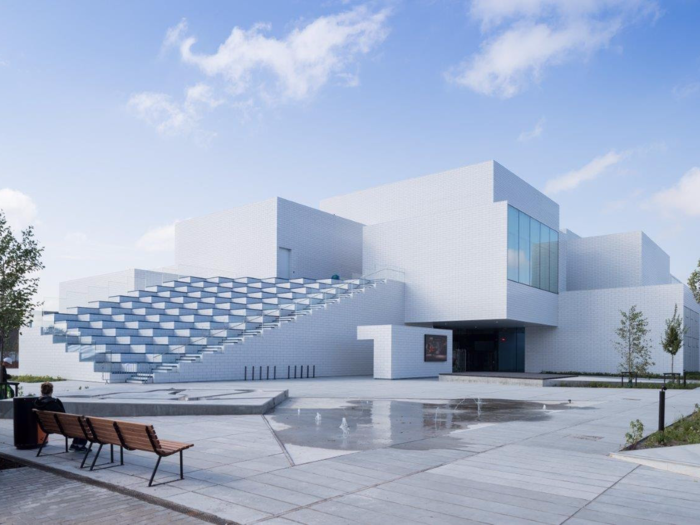
Admission to the entire Lego House is $31. The building also comes with three restaurants, outdoor seating, and a Lego store.
Lego even has a name for the adults who make the grown-up trek to Billund. They are AFoLs, or Adult Fans of Lego.


Inside the Masterpiece Gallery are handfuls of intricate designs, all employing the original 2 x 4 brick. The centerpieces are three 10-foot-tall dinosaurs standing before their respective Lego dinosaur eggs.
From the gallery, people can also access the roof to get panoramic views of the city.

Lego has said the tree is meant to pay homage to the company's beginnings. When Lego bricks were first manufactured, they were made out of wood, not plastic.
The tree is meant to symbolize those origins, in addition to marking the company's "roots."

The centerpiece of the Red Zone is a Lego-built waterfall crashing into a Lego pool.
Freeform tanks of Lego bricks, each built at kid-friendly heights, let visitors construct abstract designs and towers.

In the Green Zone, dedicated to socialization, visitors can create minifigures ("minifigs," for short) and stitch together their own stop-motion videos.
In the Yellow Zone, designed to explore emotions, people can build sea life from LEGO bricks and scan them into an iPad software setup to see the creature come alive.


In partnership with architecture firm Bjarke Ingels Group, which designed the structure, Lego began building the Lego House in 2014. Initially, it used as its model a small-scale replica made from (big surprise) Lego bricks.
The 1:100 model toured the world, stopping in places like Switzerland, France, and the US. It also visited BrickCon, one of the largestLego conventions in the world, in Seattle, Washington.
 Love in the time of elections: Do politics spice up or spoil dating in India?
Love in the time of elections: Do politics spice up or spoil dating in India?
 Samsung Galaxy S24 Plus review – the best smartphone in the S24 lineup
Samsung Galaxy S24 Plus review – the best smartphone in the S24 lineup
 Household savings dip over Rs 9 lakh cr in 3 years to Rs 14.16 lakh cr in 2022-23
Household savings dip over Rs 9 lakh cr in 3 years to Rs 14.16 lakh cr in 2022-23

Copyright © 2024. Times Internet Limited. All rights reserved.For reprint rights. Times Syndication Service.